This is an extract of an article that appeared in Minerva 191. Read on in the magazine (click here to subscribe) or on our new website, The Past, which details of all the content of the magazine. At The Past you will be able to read each article in full as well as the content of our other magazines, Current Archaeology, Current World Archaeology, and Military History Matters.
Megalithic Malta
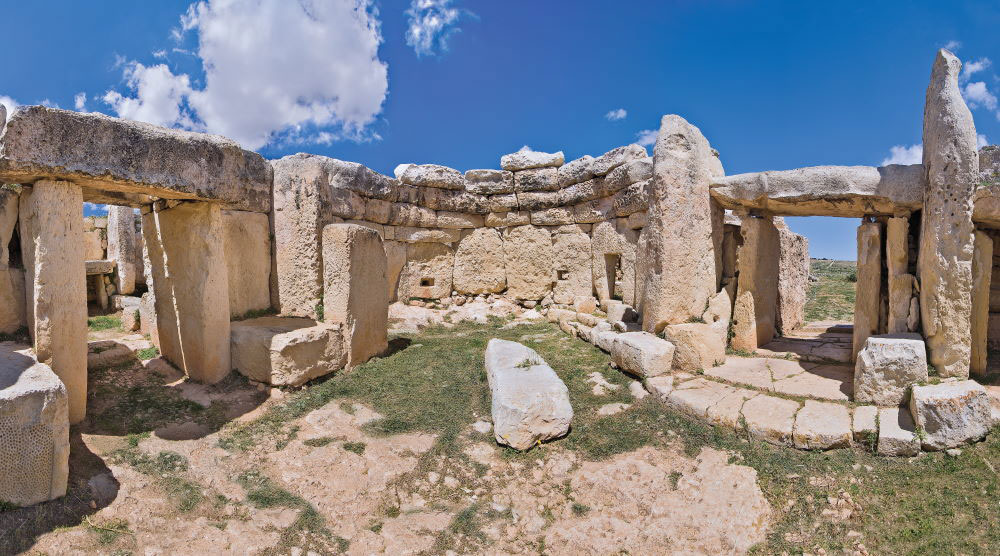
More than 4,500 years ago, one of the most remarkable civilisations of European prehistory came to an end on Malta. For a thousand years, a simple agricultural society on the small Mediterranean island and nearby Gozo, comparable to those in many other areas in Europe and the Near East, built megalithic monuments, temples, which were unparalleled at that time and still spark our imagination. These temples are among the oldest freestanding structures in the world and have been the subject of investigations since the early 19th century, but the precise role they served is still shrouded in mystery, as are the striking, corpulent statuettes found within them and in the islands’ similarly gigantic underground tombs. As the Rijksmuseum van Oudheden in Leiden presents an exhibition on this extraordinary Neolithic culture, we take a broad look at the archaeology of megalithic Malta over the following pages – not only what is on display at the Dutch exhibition but also what can be found at the museums and sites on the islands themselves.
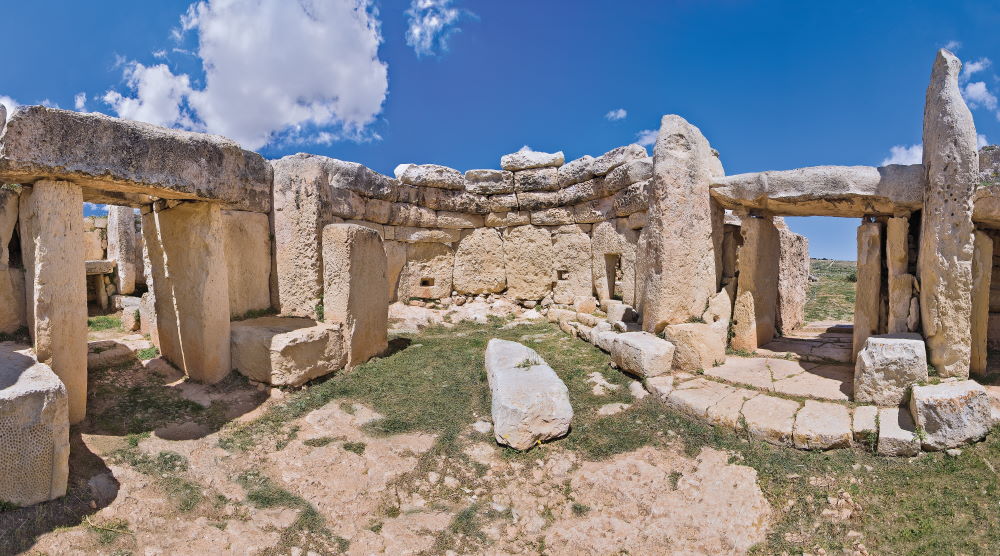
The Mnajdra temple, on Malta’s southern coast, 3000-2500 BC. (Image: Heritage Malta)
With a total land area of 316km², the Maltese islands – consisting of Malta itself, the smaller island of Gozo to the north-west, and the tiny island of Comino in between – would comfortably fit into the 572km² Isle of Man, one of the British Isles. Yet despite their small size, the Maltese islands are packed with an impressive density and rich variety of monuments, including some famous UNESCO World Heritage sites. Besides the prehistoric temples and tombs we discuss here, there are also Roman sites, including catacombs; the many fortresses and houses founded by the knights of the Order of Saint John (the Order of Malta), particularly in the capital Valletta; and the heritage associated with British rule, such as the impressive naval base. As well as the attractions of sun and sea, these islands have a lot of culture to offer, characterised by international cross-pollination with Arab, Mediterranean, and British elements. The islands are therefore well worth the trip, not least because visitors can come face-to-face with prehistoric monuments that were built 1,000 years before the great pyramids at Giza. These impressive monuments, which are best experienced up close, were accompanied by a curious cult without parallel. The story begins about 8,000 years ago.
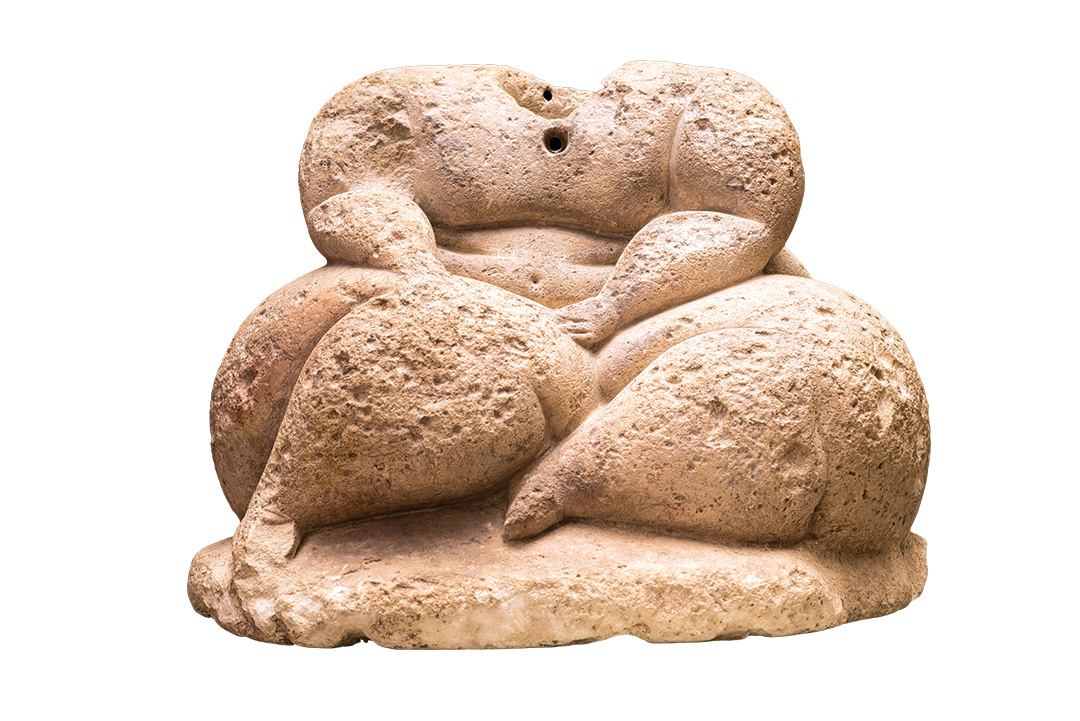
A figurine of a seated corpulent person, found at Hagar Qim, 3000-2450 BC. The socket for a head is visible. Size: 29.4 x 24 x 17cm. (Image: Heritage Malta)
Long before its human occupants arrived, Malta was inhabited by unusual animals, including dwarf elephants (Elephas falconeri), hippopotami, and giant dormice. Their bones are mostly found in the Għar Dalam cave, the ‘Cave of Darkness’, in the south of Malta. The unusual size of these animals is probably related to the isolation of the island and the special path that evolution sometimes takes on islands, as Charles Darwin observed. While not the same as biological evolution, we might assume that the rather special cultural developments that would follow millennia later also owed something to the relative isolation of the Maltese islands. The dwarf elephants, giant dormice, and other prehistoric species were already extinct when the first human inhabitants set foot on Malta around 5900 BC, but traces of these first people were also found in the same cave.
These early farming communities colonised Malta after the emergence of agriculture around 9,000 years ago in the Fertile Crescent area in the Middle East, probably reaching the island by boat from nearby Sicily, which, at 90km away, is visible on a clear day. Characteristic pottery decorated with impressions made by objects including cockle shells (called impressed ware) has been found on both Malta and Sicily, further confirming this link. The first farmers on Malta had a way-of-life that involved mixed farming, with cereal (barley, buckwheat, and lentils) being cultivated as well as sheep, goats, cattle, and pigs. The soil was fertile and there were plenty of natural resources, including water and wood. At the same time, some objects and raw materials were imported, such as glistening black obsidian from the islands of Lipari and Pantelleria, flint and alabaster from Sicily, and greenstone from northern Italy. The island was therefore never completely isolated and there was always a network of people and goods crossing the Mediterranean and stopping in Malta.
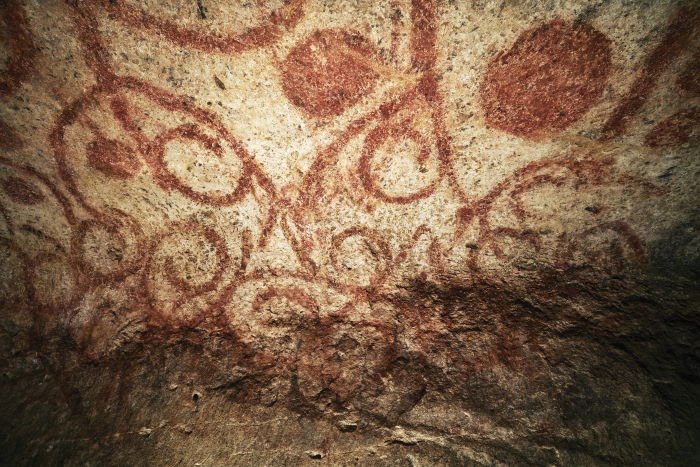
Spiralling designs painted in red ochre in the Ħal Saflieni hypogeum. The site saw activity between c.4000 BC and 2500 BC, with its main period of use between 3300 and 3000 BC. (Image: Clive Vella)
We can draw a broad timeline for the developments within these agricultural societies based on their successive pottery styles. The first of these periods is the Għar Dalam phase (5900-4500 BC), named after the cave and distinguished by its dark pottery; this was also when the earliest figurines depicting animal heads were produced. This is then followed by the Grey Skorba (4500-4400 BC) and Red Skorba (4400-4100 BC) phases, with their grey and then red – coloured with ochre – pottery. It is during the Red Skorba phase that we see the first stylised human figures in clay and stone appear: abstract female figures with a triangular shape, like those found in the later Cycladic figurines. One of the few Neolithic domestic settlements discovered so far was also found at the Skorba site in northern Malta, and consisted of an oval hut with a stone foundation.
There is much we do not know about the world of the living during these periods, but the burial culture, especially in the subsequent Żebbuġ phase (4100-3700 BC), is better understood. Increasingly at this time, people were burying their dead in collective rock-cut tombs that were entered through shafts carved into the limestone. These developed from single chambers to multi-chambered complexes, which were used for many years as cemeteries and ossuaries. What this shift signals is a growing awareness of kinship and community. This spirit of solidarity proved to be an important ingredient for the impressive structures that would soon spread across the island.
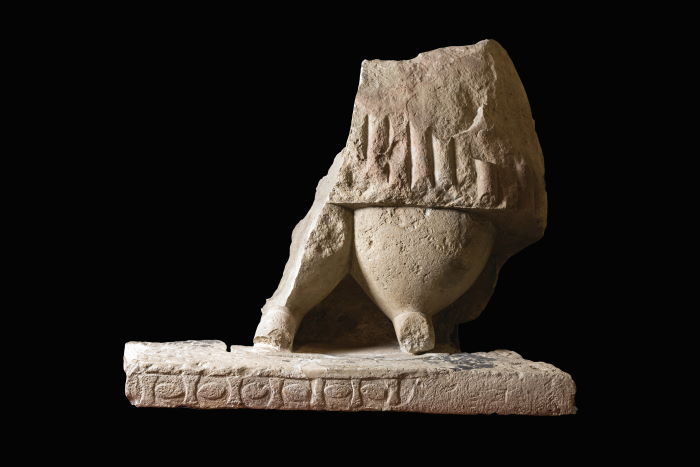
A colossal statue of a skirted figure from the Tarxien temples, 3000-2450 BC. Only the lower half of what would have been a towering 2m-tall figure survives. Size: 1.2m tall. (Image: Daniel Cilia)
From around 3600 BC, Malta and Gozo saw the rise of unprecedented architectural feats, megalithic constructions mainly built from the softer Globigerina limestone that forms the subsoils of most of the islands. This was the start of the Temple Period. The temples, of which there are around 20 remaining, vary considerably in size and dimensions; the biggest, such as those at Tarxien, measure over 8,000m². They are complex structures that required considerable planning and organisation, and the input – both time and energy – of many people and animals. The largest blocks are over 6m tall and weigh more than 20 tonnes, so even moving them would be a significant undertaking.
